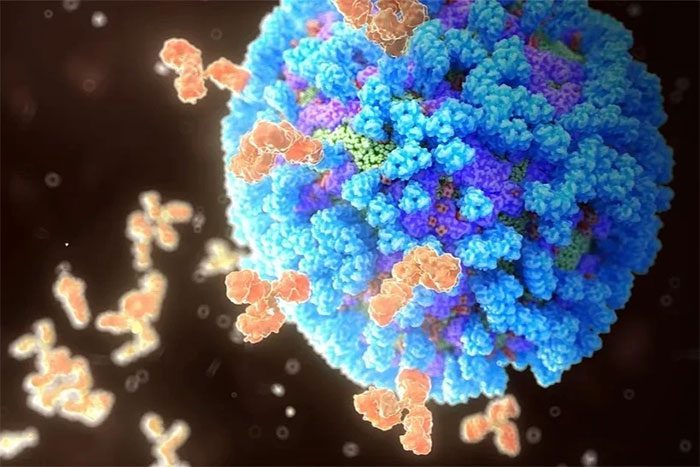Scientists have recently discovered rare antibodies that can access the “dark region” of the influenza virus, laying the groundwork for improved treatment methods.
The influenza virus has a mushroom-shaped protein called neuraminidase (NA), which contains a part considered to be an “unexplored area”, as much of the structure beneath the mushroom cap of the virus remains uncharted by science, according to LiveScience on March 6.

New discovery opens up treatment possibilities for various influenza viruses. (Photo: LiveScience).
The NA protein is believed to assist the influenza virus in moving to its preferred receptors outside the host cell. Once the virus has infected and multiplied inside the cell, NA helps new viruses escape from the cell.
When NA mutates, changes in its internal structure make the virus harder to eliminate or resistant to antiviral drugs.
In a study published in the journal Immunity on March 1, scientists analyzed the blood of two individuals infected with the H3N2 influenza virus and identified six antibodies that attached to the dark region of NA. Through analysis, the scientists found that these antibodies bound to various H3N2 virus strains and slowed down the replication process.
When tested on mice, these antibodies also helped the mice survive an H3N2 virus infection, providing a basis for the antibodies’ potential in preventing and treating influenza in humans. The antibodies demonstrated strong protective capabilities when tested on mice, both before and after exposure to the H3N2 virus.
The researchers also tested several drug-resistant influenza strains and obtained similar results. Current antiviral medications like Tamiflu inhibit NA, thereby preventing the virus from exiting infected cells.
The research findings may serve as a foundation for the development of antiviral drugs and vaccines that can combat a broader range of influenza viruses. Current influenza vaccines are designed to target hemagglutinin (HA) found on the surface of the influenza virus. The HA protein mutates rapidly, necessitating continuous updates to the flu vaccines to counteract circulating HA protein strains.
“Our discovery paves the way for developing effective countermeasures against the ever-changing influenza virus by identifying vulnerable sites hidden beneath the NA protein,” said the lead author of the study.


















































